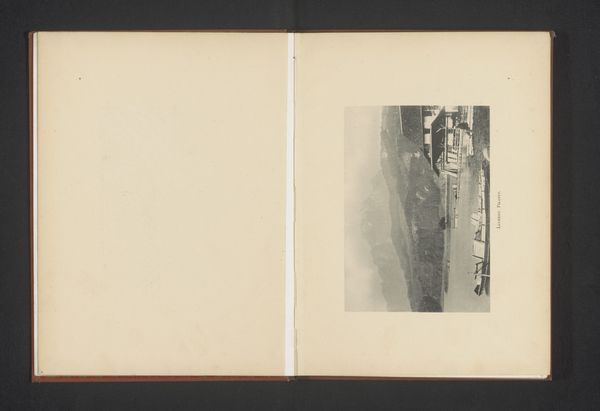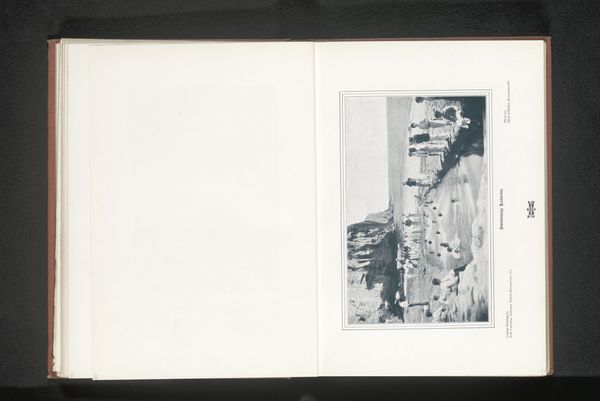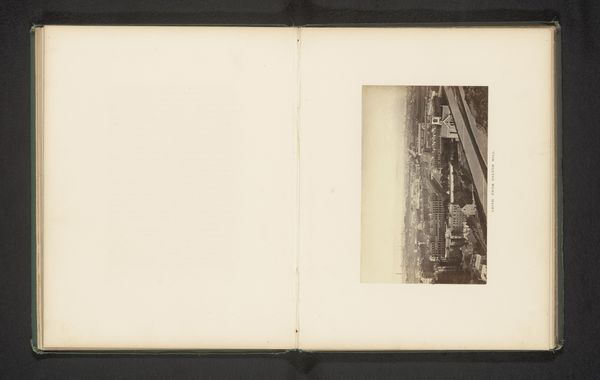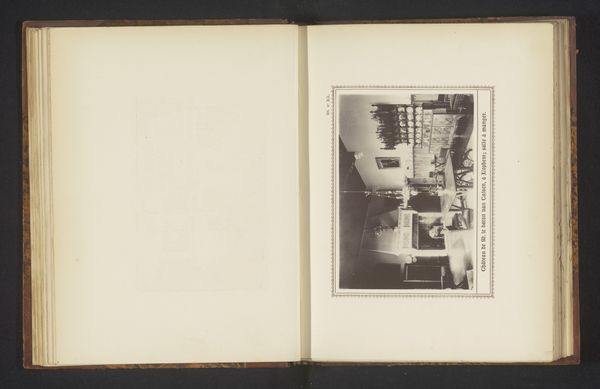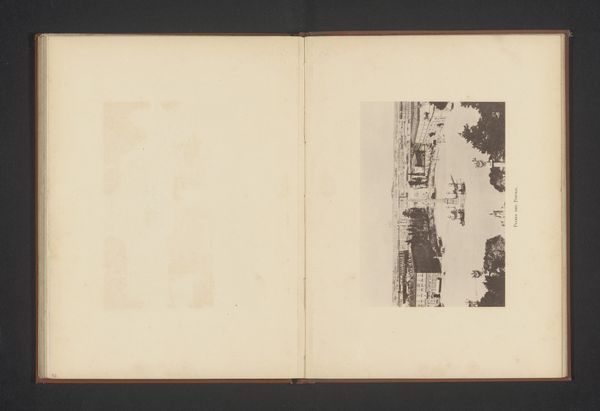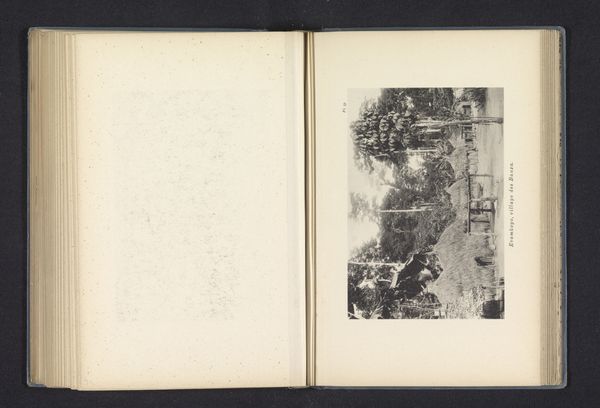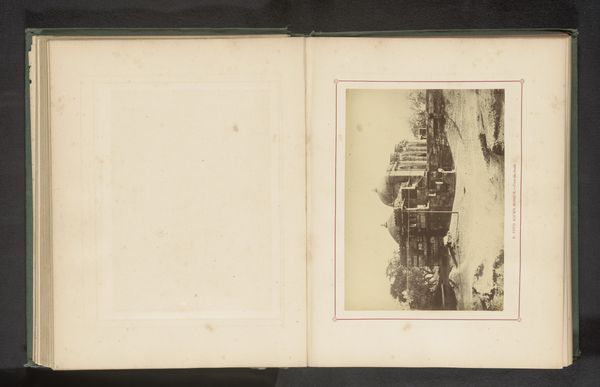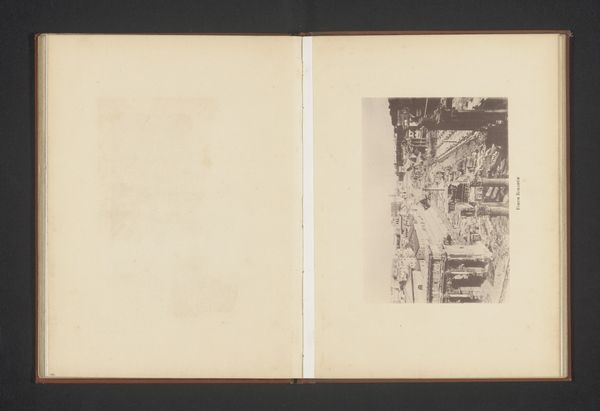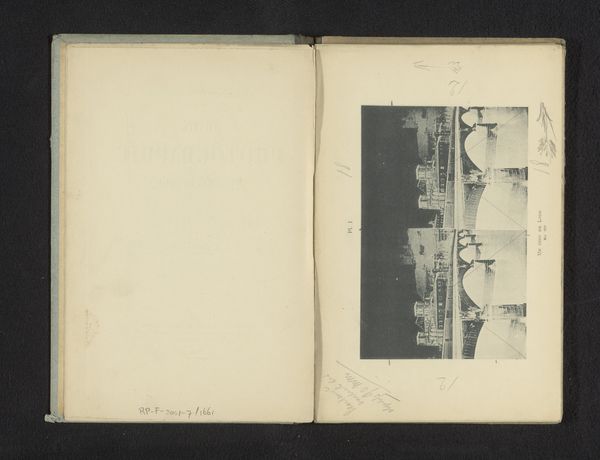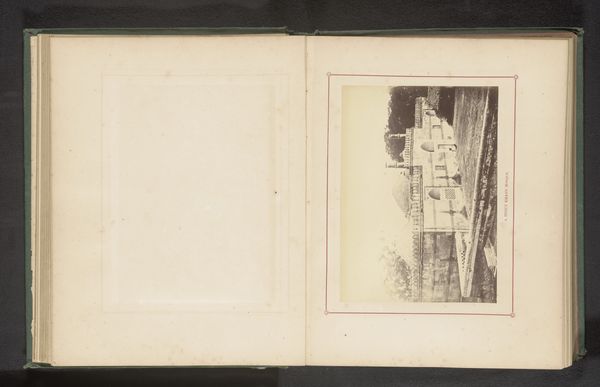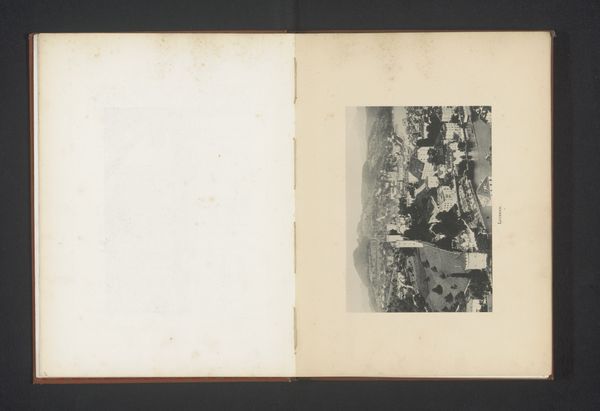
print, photography, albumen-print
#
portrait
#
pictorialism
# print
#
landscape
#
street-photography
#
photography
#
cityscape
#
albumen-print
Dimensions: height 108 mm, width 160 mm
Copyright: Rijks Museum: Open Domain
Curator: So, here we have an albumen print from before 1900. It's entitled "Gezicht op Torquay Harbour," and it's credited to F. Downer & Sons. Editor: Albumen...that makes it feel old in my bones somehow, not just "old" but *faded*, like an echo from a sepia dream. I get an overwhelming sense of peace here, though. It’s almost impossibly still, like everyone’s holding their breath. Curator: It’s fascinating how a still image can evoke that sensation. This harbor scene is beautifully composed, though—the way the light hits the sails and reflects on the water...it's quite striking. Downer & Sons seem to have understood how to capture the essence of this coastal town. The decorative frame reinforces this with imagery related to organic forms, almost vines growing on the page itself. Editor: That ornamental frame, yes, it lends a hand-crafted feel...like someone carefully preserving a precious memory. But look closely – what do you make of the lack of strong shadows? The print is practically monotone gray and this gives it such a flattened-out feeling, like an almost dreamlike lack of depth to the town receding up the slope, yet it makes it quite attractive. Curator: Well, that could be the process of albumen printing itself; it tends to flatten tones and create a softer overall image. It was popular for portraiture for similar reasons and made it seem even more magical! Editor: The pictorialist style too, lends itself to softness and flattening out details for emotive impact! It's such a departure from the hyper-realism we're used to these days, almost creating the appearance of a lithograph. It pulls away into symbol instead of photographic record. Do you think the choice of presenting the photo within a framed, book-like context does more to re-inforce this romanticization, or historical separation? Curator: I think it does both, creating a remove while solidifying that sense of treasured memory within an easily held token, bringing history to you. It gives a tactile dimension to something from so long ago. A way to intimately re-engage. Editor: And perhaps to carry it forward...making a quiet ripple through time. I'll remember that quiet stillness of that harbor long after I leave here, like some sort of mental souvenir.
Comments
No comments
Be the first to comment and join the conversation on the ultimate creative platform.
